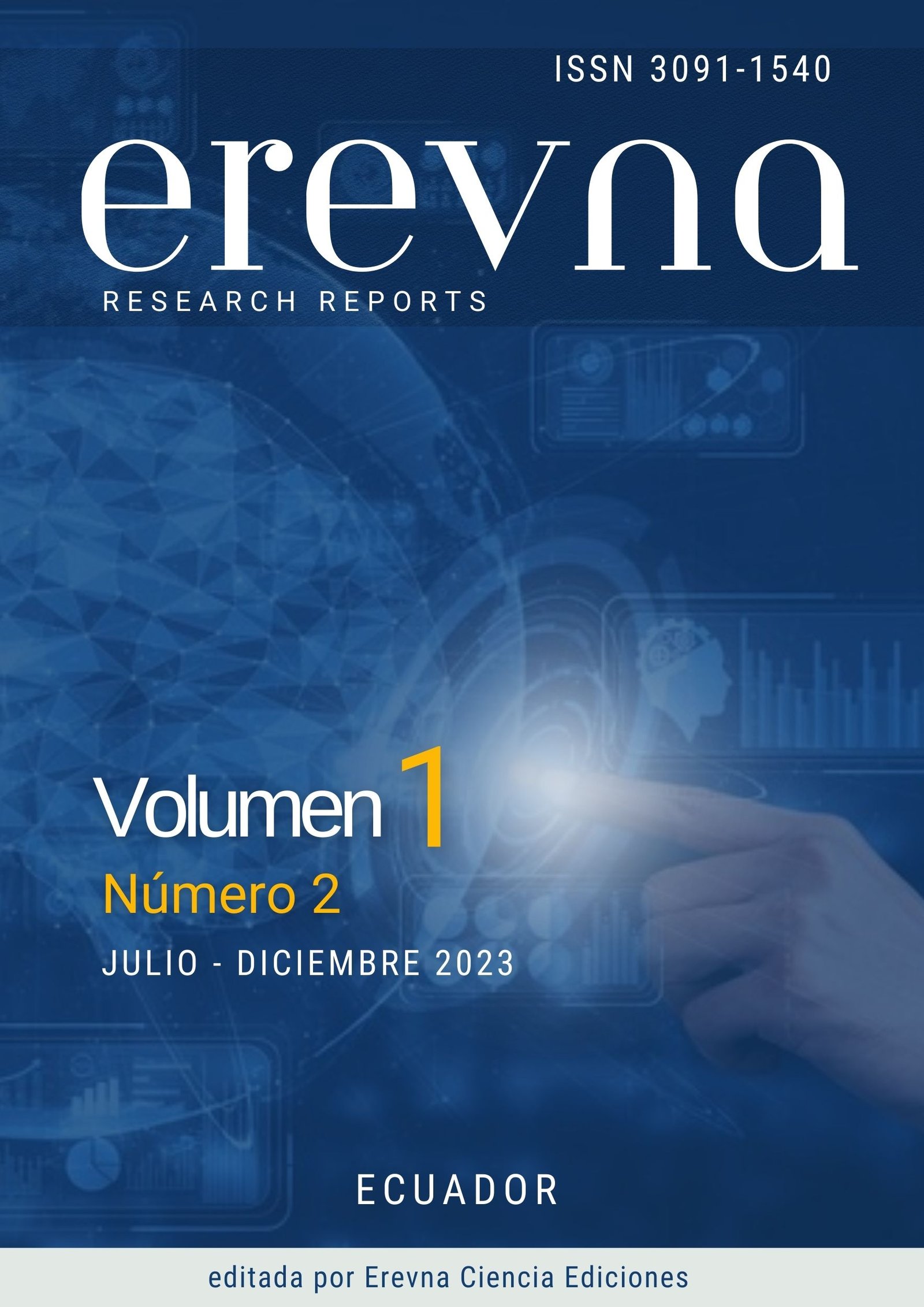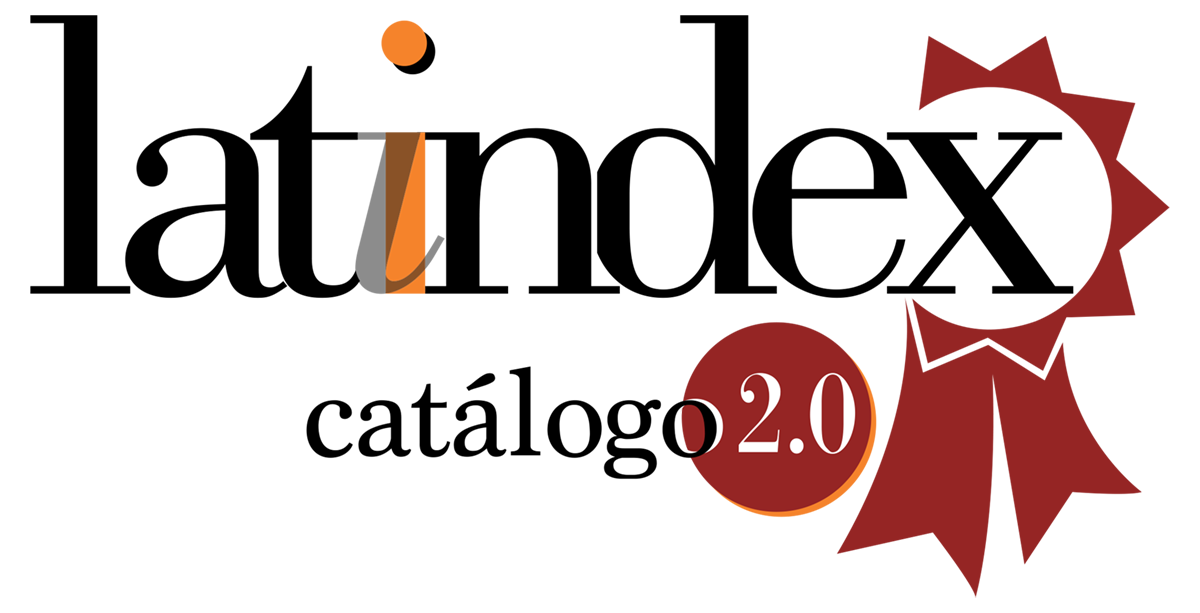Factores de Riesgos Laborales y Psicosociales en Auxiliares de Farmacia
DOI:
https://doi.org/10.70171/5ptrdp08Palabras clave:
agotamiento, riesgo laboral, riego psicosocial, salud mentalResumen
Justificación: los riesgos psicosociales en el trabajo suelen manifestarse a través del estrés, el agotamiento emocional y conflictos interpersonales; por ello, resulta imprescindible identificar las condiciones laborales que afectan la salud y el bienestar de los trabajadores. Objetivo: identificar los principales factores de riesgos psicosociales que enfrentan los auxiliares de farmacias en Ecuador. Metodología: se realizó un estudio cuantitativo, no experimental y transversal, con un alcance descriptivo y exploratorio. Se utilizó el Maslach Burnout Inventory (MBI), el Copenhagen Psychosocial Questionnaire (CoPsoQ-III) y la Escala de Depresión, Ansiedad y Estrés (DASS-21). Resultados: los participantes presentaron un bajo nivel de despersonalización y un alto nivel de realización personal, pero experimentaron un elevado agotamiento emocional, lo que incrementó el riesgo de Burnout. En cuanto a los riesgos psicosociales, la mayoría de los participantes reportaron bajos niveles de exigencias psicológicas y un alto apoyo social, mientras que un 60% percibió alta inseguridad sobre las condiciones laborales. En términos de salud mental, la mayoría se encontraba en niveles normales, aunque un pequeño porcentaje presentó síntomas severos de depresión, ansiedad y estrés. Conclusión: los hallazgos del estudio destacan la importancia de abordar el agotamiento emocional y los riesgos psicosociales en los auxiliares de farmacia, así como la necesidad urgente de intervenciones de apoyo psicológico.
Descargas
Referencias
Aguilar Acosta, A., & Mayorga Lascano, M. (2020). Relación entre Estrés Docente y Síndrome de Burnout en docentes de la Zona 3 de Ecuador. Uniandes Episteme. Revista de Ciencia, Tecnología e Innovación., 7(2), 265-278. https://n9.cl/f9mbx
Arredondo Rodríguez, M., Viña Brito, S. J., & Oramas Viera, A. (2019). Experiencia cubana con el Istas 21 en la evaluación de los factores de riesgo psicosociales laborales en un centro de telecomunicaciones. Revista Cubana de Salud y Trabajo, 20(1), 58-64. https://n9.cl/ik8bnh
Asante, J. O., Li, M. J., Liao, J., Huang, Y. X., & Hao, Y. T. (2019). The relationship between psychosocial risk factors, burnout and quality of life among primary healthcare workers in rural Guangdong province: a cross-sectional study. BMC health services research, 19(1), 1-10. https://doi.org/10.1186/s12913-019-4278-8 DOI: https://doi.org/10.1186/s12913-019-4278-8
Bernal Villareal, L. A., & Yarlaque Roman, Y. M. (2018). Condiciones laborales y estres de los trabajadores administrativos de la Municipalidad Distrital de Huaura. Big Bang Faustiniano, 7(3). https://doi.org/10.51431/bbf.v7i3.435 DOI: https://doi.org/10.51431/bbf.v7i3.435
Burr, H., Berthelsen, H., Moncada, S., Nübling, M., Dupret, E., Demiral, Y., ... & Pohrt, A. (2019). The third version of the Copenhagen psychosocial questionnaire. Safety and health at work, 10(4), 482-503. https://doi.org/10.1016/j.shaw.2019.10.002 DOI: https://doi.org/10.1016/j.shaw.2019.10.002
Burr, H., Nübling, M., Moncada, S., Dupret, E., Franco, J. M. P., & Berthelsen, H. (2019). COPSOQ III. Federal Institute for Occupational Safety and Health.
Calderón Saldaña, J. P. C., & Alzamora de los Godos, L. (2019). Diseños de investigación para tesis de posgrado. Revista peruana de psicología y trabajo social, 7(2), 71-76. https://doi.org/10.32544/psicologia.v7i2.660
Cartagena Hernández, J. A., & Campos, Y. Y. (2022). Riesgos psicosociales laborales en un hospital de Quito: ¿efecto de la pandemia? Revista Conecta Libertad ISSN 2661-6904, 6(3), 41-56. https://revistaitsl.itslibertad.edu.ec/index.php/ITSL/article/view/304
Castañeda Sánchez, V., & Herrera Cardona, A. (2020). Síndrome de trabajador quemado: existencia del Burnout sector salud. Cultura del Cuidado Enfermeria, 17(1), 32-44. https://dialnet.unirioja.es/servlet/articulo?codigo=7818318 DOI: https://doi.org/10.18041/1794-5232/cultrua.2020v17n1.7204
Castillo-Ante, L., Ordoñez-Hernández, C., & Calvo-Soto, A. (2020). Carga física, estrés y morbilidad sentida osteomuscular en trabajadores administrativos del sector público. Universidad y Salud, 22(1), 17-23. https://doi.org/10.22267/rus.202201.170 DOI: https://doi.org/10.22267/rus.202201.170
Cavieres, Á., & López-Silva, P. (2021). La depresión como enfermedad: en defensa del modelo biomédico en psiquiatría. Revista médica de Chile, 149(2), 274-280. http://dx.doi.org/10.4067/s0034-98872021000200274 DOI: https://doi.org/10.4067/s0034-98872021000200274
Chacón Delgado, E., Xatruch De la Cera, D., Fernández Lara, M., & Murillo Arias, R. (2021). Generalidades sobre el trastorno de ansiedad. Revista Cúpula, 35(1), 23-36. https://n9.cl/s3tup
Cortés Díaz, J. M. (2018). Técnicas de prevención de riesgos laborales. Editorial Tebar.
Cusirramos Carpio, Y., Arias Gallegos, W. L., & Jiménez Barrios, N. A. (2020). Capacidad emprendedora y estrés en trabajadores de instituciones privadas de Arequipa durante la pandemia del COVID-19. Illustro, 11(1), 81-97. https://doi.org/10.36901/illustro.v11i1.1309 DOI: https://doi.org/10.36901/illustro.v11i1.1309
Daza, P., Novy, D. M., Stanley, M. A., & Averill, P. (2002). The depression anxiety stress scale-21: Spanish translation and validation with a Hispanic sample. Journal of psychopathology and behavioral assessment, 24, 195-205. https://link.springer.com/article/10.1023/A:1016014818163 DOI: https://doi.org/10.1023/A:1016014818163
Erquicia, J., Valls, L., Barja, A., Gil, S., Miquel, J., Leal-Blanquet, J., ... & Vega, D. (2020). Impacto emocional de la pandemia de Covid-19 en los trabajadores sanitarios de uno de los focos de contagio más importantes de Europa. Medicina clínica, 155(10), 434-440. https://doi.org/10.1016/j.medcli.2020.07.006 DOI: https://doi.org/10.1016/j.medcli.2020.07.006
Estrella-Arias, X. O., & Enríquez-Estrella, M. Á. E. E. (2021). Gestión de riesgos psicosociales para prevenir el síndrome de burnout en los trabajadores de la empresa Venrental Cía. Ltda. Polo del Conocimiento, 6(12), 510-533. https://bit.ly/4f7uh9G
Garcés Ortiz, C. R., Loli Pineda, A. E., & Navarro Vargas, V. I. (2020). Calidad de vida laboral y síndrome de burnout en loscolaboradores del sector retail de Lima Metropolitana. Revista de investigación en psicología, 23(2), 67-82. https://doi.org/10.15381/rinvp.v23i2.19233 DOI: https://doi.org/10.15381/rinvp.v23i2.19233
Gómez Ortiz, V., Perilla-Toro, L. E., & Hermosa, A. M. (2019). Riesgos para la salud de profesores universitarios derivados de factores psicosociales laborales. Universitas Psychologica, 18(3), 1-15. https://doi.org/10.11144/Javeriana.upsy18-3.rspu DOI: https://doi.org/10.11144/Javeriana.upsy18-3.rspu
González-Abarca, A. J., Ramos-Corrales, J., Nolasco-García, E. A., Lara-Flores, A., Ramírez-Piedras, A., Márquez-Alcaraz, M. E., ... & Amaya-G, M. R. (2018). Depresión y suicidio. Salud Jalisco, 1(1), 47-55. https://n9.cl/rdzyi
Hurtado-Yumbato, W. A. (2020). Convivencia entre resiliencia y síndrome de burnout en trabajadores de atención al cliente en Lima. CASUS. Revista de Investigación y Casos en Salud, 5(3), 160-168. ). https://doi.org/10.35626/casus.3.2020.315
Jorquera Gutiérrez, R., & Herrera Gallardo, F. (2020). Salud mental en funcionarios de una universidad chilena: desafíos en el contexto de la COVID-19. Revista Digital de Investigación en Docencia Universitaria, 14(2). https://doi.org/10.19083/ridu.2020.1310 DOI: https://doi.org/10.19083/ridu.2020.1310
Lenzo, V., Quattropani, M. C., Sardella, A., Martino, G., & Bonanno, G. A. (2021). Depression, anxiety, and stress among healthcare workers during the COVID-19 outbreak and relationships with expressive flexibility and context sensitivity. Frontiers in Psychology, 12, 623033. https://doi.org/10.3389/fpsyg.2021.623033 DOI: https://doi.org/10.3389/fpsyg.2021.623033
Li, J., Brisson, C., Clays, E., Ferrario, M. M., Ivanov, I. D., Landsbergis, P., ... & Siegrist, J. (2018). WHO/ILO work-related burden of disease and injury: protocol for systematic reviews of exposure to long working hours and of the effect of exposure to long working hours on ischaemic heart disease. Environment international, 119, 558-569. https://doi.org/10.1016/j.envint.2018.06.022 DOI: https://doi.org/10.1016/j.envint.2018.06.022
Losada, A., & Marmo, J. (2022). Clasificación de Métodos de investigación en Psicología. PSICOLOGÍA UNEMI, 6(11), 13-31. https://doi.org/10.29076/issn.2602-8379vol6iss11.2022pp13-31p DOI: https://doi.org/10.29076/issn.2602-8379vol6iss11.2022pp13-31p
Lovibond, S.H. y Lovibond, P.F. (1995). Manual for the Depression Anxiety Stress Scales. (2nd. Ed.) Sydney: Psychology Foundation. DOI: https://doi.org/10.1037/t01004-000
Lovo, J. (2020). Síndrome de burnout: Un problema moderno. Entorno, (70), 110-120. https://doi.org/10.5377/entorno.v0i70.10371 DOI: https://doi.org/10.5377/entorno.v0i70.10371
Magnavita, N., & Chirico, F. (2020). New and emerging risk factors in occupational health. Applied Sciences, 10(24), 8906. https://doi.org/10.3390/app10248906 DOI: https://doi.org/10.3390/app10248906
Manrique Torres, A. M. . (2019). Acoso laboral (mobbing): Riesgo psicosocial emergente invisible. Revista Interamericana de Psicología Ocupacional, 38(2), 127-137. https://doi.org/10.21772/ripo.v38n2a03 DOI: https://doi.org/10.21772/ripo.v38n2a03
Maslach, C., & Jackson, S. E. (1981). The measurement of experienced burnout. Journal of organizational behavior, 2(2), 99-113. https://doi.org/10.1002/job.4030020205 DOI: https://doi.org/10.1002/job.4030020205
Méndez López, M. A., & Martínez Alcántara, S. (2022). Exigencias laborales y daños a la salud del personal de tránsito aéreo. Integración Salud-Seguridad. Ciencia y Poder Aéreo, 17(2). https://doi.org/10.18667/cienciaypoderaereo.738 DOI: https://doi.org/10.18667/cienciaypoderaereo.738
Muñoz Rojas, D., Orellano, N., & Hernández Palma, H. (2018). Riesgo psicosocial: tendencias y nuevas orientaciones laborales. Psicogente, 21(40), 532-544. https://doi.org/10.17081/psico.21.40.3090 DOI: https://doi.org/10.17081/psico.21.40.3090
Núñez Zarazu, L., Núñez Zarazu, N. S., Alberto Veramendi, V. S., Asnate Salazar, E. J., Reyes Narváez, S. E., & Amado Oncoy, A. R. (2021). La salud mental de los enfermeros en un hospital andino en tiempos de COVID-19. Vive Revista de Salud, 4(11), 130-140. https://doi.org/10.33996/revistavive.v4i11.91 DOI: https://doi.org/10.33996/revistavive.v4i11.91
Obando Zegarra, R., Arévalo-Ipanaqué, J. M., Aliaga Sánchez, R. A., & Obando Zegarra, M. (2020). Ansiedad, estrés y depresión en enfermeros de emergencia Covid-19. Index de enfermería, 29(4), 225-229. https://n9.cl/pnuly
Organización Internacional del Trabajo (28 de septiembre 2022). Salud mental en el trabajo. https://www.ilo.org/global/about-the-ilo/newsroom/news/WCMS_856931/lang--es/index.htm
Organización Mundial de la Salud (21 de febrero, 2023). Estrés. Preguntas y respuestas. https://www.who.int/es/news-room/questions-and-answers/item/stress
Organización Mundial de la Salud. (28 de septiembre 2022). La salud mental en el trabajo. https://www.who.int/es/news-room/fact-sheets/detail/mental-health-at-work
Organización Panamericana de la Salud. (28 de abril 2016). Estrés laboral es una carga para los individuos, los trabajadores y las sociedades. https://www3.paho.org/hq/index.phpoption=com_content&view=article&id=11973:workplace-stress-takes-a-toll-on-individuals-employers-and-societies&Itemid=0&lang=es#gsc.tab=0
Otzen, T., & Manterola, C. (2017). Técnicas de Muestreo sobre una Población a Estudio. International journal of morphology, 35(1), 227-232. http://dx.doi.org/10.4067/S0717-95022017000100037 DOI: https://doi.org/10.4067/S0717-95022017000100037
Pace, F., D’Urso, G., Zappulla, C., & Pace, U. (2021). The relation between workload and personal well-being among university professors. Current Psychology, 40, 3417-3424. https://doi.org/10.1007/s12144-019-00294-x DOI: https://doi.org/10.1007/s12144-019-00294-x
Pozo, L. F. T., & Alvarez, M. D. L. A. M. (2020). Síndrome Burnout en funcionarios públicos de la Provincia de Tungurahua. Centros: Revista Científica Universitaria, 9(2), 1-19. https://doi.org/10.48204/j.centros.v9n2a1 DOI: https://doi.org/10.48204/j.centros.v9n2a1
Ramírez Lema, K. A., & Rocancio Rubiano, M. C. (2023). Burnout y ansiedad clínica en trabajadores de la empresa “Luminox Láser Ecuador” expuestos a la pandemia COVID-19. REVISTA U-Mores, 2(1), 55-66. https://doi.org/10.35290/ru.v2n1.2023.772 DOI: https://doi.org/10.35290/ru.v2n1.2023.772
Ramos-Galarza, C. A. (2020). Los alcances de una investigación. CienciAmérica, 9(3), 1-6. http://dx.doi.org/10.33210/ca.v9i3.336 DOI: https://doi.org/10.33210/ca.v9i3.336
Raspa, P., López, D. D., & Moya, F. O. (2019). Síndrome de Burnout en trabajadores de empresas del sector comercio en la ciudad de Maracaibo, Venezuela. Revista Espacios, 40(43), 8-15. https://ww.revistaespacios.com/a19v40n43/a19v40n43p08.pdf
Rodríguez Anchundia. L., Pico Pillasagua. Y., Espinel Rvera. S., y Vélez García. E. (2021). Prevalencia del síndrome de Burnout en personal de empresa pesquera del Ecuador. Revista Científica Biomédica Higía de la Salud, 4(1). https://doi.org/10.37117/higia.v1i4.497 DOI: https://doi.org/10.37117/higia.v1i4.497
Rodríguez Ramírez, M. D. C., & Reátegui-Vargas, P. E. (2020). Personalidad situacional y síndrome de burnout en trabajadores de una institución especializada en rehabilitación. Horizonte Médico (Lima), 20(1), 30-36. https://doi.org/10.24265/horizmed.2020.v20n1.05 DOI: https://doi.org/10.24265/horizmed.2020.v20n1.05
Rodríguez, M., & Mendivelso, F. (2018). Diseño de investigación de corte transversal. Revista médica sanitas, 21(3), 141-146. https://doi.org/10.26852/01234250.20 DOI: https://doi.org/10.26852/01234250.20
Román Hernández, J. J. (2019). Riesgos, trabajo y sociedad: la subjetividad como vínculo. Teoría y Crítica de la Psicología, 12, 97-116. https://n9.cl/794mx
Sáenz Yánez, M., & Ugalde Vicuña, J. W. (2019). Riesgo psicosocial en los operadores en un Call Center. Revista Universidad y Sociedad, 11(4), 193-199. http://scielo.sld.cu/pdf/rus/v11n4/2218-3620-rus-11-04-193.pdf
Salamanca Velandia, S. R., Pérez Torres, J. M., Infante Alvarado, A. F., & Olarte Ardila, Y. Y. (2019). Análisis de los factores de riesgo psicosocial a nivel nacional e internacional. Revista Temas: Departamento de Humanidades Universidad Santo Tomás Bucaramanga, (13), 39-45. https://doi.org/10.15332/rt.v0i13.2332 DOI: https://doi.org/10.15332/rt.v0i13.2332
Salcedo, D. R. N., Vallejo, V. A. Q., & Falcón, V. V. (2021). Estrés laboral y salud general en trabajadores administrativos del área bancaria. Revista Scientific, 6(21), 81-100. https://doi.org/10.29394/Scientific.issn.2542-2987.2021.6.21.4.81-100 DOI: https://doi.org/10.29394/Scientific.issn.2542-2987.2021.6.21.4.81-100
Salvagioni, D. A. J., Melanda, F. N., Mesas, A. E., González, A. D., Gabani, F. L., & Andrade, S. M. D. (2017). Physical, psychological and occupational consequences of job burnout: A systematic review of prospective studies. PloS One, 12(10), e0185781. https://doi.org/10.1371/journal.pone.0185781 DOI: https://doi.org/10.1371/journal.pone.0185781
Seijas-Solano, D. E. (2020). Riesgos psicosociales, estrés laboral y síndrome burnout en trabajadores universitarios de una escuela de bioanálisis. Revista de Salud Pública, 21, 102-108. https://doi.org/10.15446/rsap.V21n1.71907 DOI: https://doi.org/10.15446/rsap.v21n1.71907
Seo, J. S., Wei, J., Qin, L., Kim, Y., Yan, Z., & Greengard, P. (2017). Cellular and molecular basis for stress-induced depression. Molecular psychiatry, 22(10), 1440-1447. https://doi.org/10.1038/mp.2016.118 DOI: https://doi.org/10.1038/mp.2016.118
Suárez Duarte, R. J., Campos Sequeira, L. Y., Villanueva, J. del S., & Mendoza Castro, C. (2020). Estrés laboral y su relación con las condiciones de trabajo. Revista Electrónica De Conocimientos, Saberes Y Prácticas, 3(1), 104–119. https://doi.org/10.5377/recsp.v3i1.9794 DOI: https://doi.org/10.5377/recsp.v3i1.9794
Publicado
Número
Sección
Categorías
Licencia
Derechos de autor 2023 Angela Elizabeth Barandica-Macías (Autor/a)

Esta obra está bajo una licencia internacional Creative Commons Atribución-NoComercial-CompartirIgual 4.0.





















